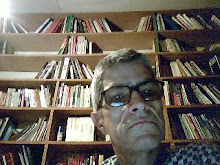30.1.16
Bissau: Força Aérea sem aviões
On leaving Bissalanca by 1973-74, the Portuguese Air Force left three North American T-6Gs.
After achieving independence from Portugal, the air force was formed by officers returning from training in Cuba and the USSR. The FAGB was re-equipped by the Soviet Union with a limited aid package in which its first combat aircraft were introduced. Five MIG-17s and two MiG-15UTI trainers entered service with a single Mi-8 helicopter.
In 1978 France provided more aircraft aid in the form of a Reims-cessna FTB.337 for coastal patrol and a surplus Alouette III. A Dassault Falcon 20F was donated by the Angolan government but was soon sold to the USA. In the late 1980s a similar number of MiG 21s replaced the MiG 17s, also delivered an AN-24, a YAK-40 and another Mi-8 helicopter. In the early 90s they received ex-polish PZL-Mielec Lim-6 Fresco fighter bombers from Poland and East Germany.
The force's title was changed to Força Aérea da Guiné-Bissau (FAGB) after the outbreak of the civil war in 1998.[9] Cooper and Weinert state 'when sighted for the last time in ..1991, most of the [MiG] fleet was in 'storage' inside several hangars on the military side of Bissalanca IAP (Osvaldo Vieira International Airport), and in a deteriorating condition.'
As of 2015 Guinea-Bissau has no aircraft in flying condition, with the last know type a SE.3105 helicopter, which ceased operating in 2011. Wikipedia
O Chefe do Estado-Maior desta Força Aérea sem aviões, Ibraima Papa Camará, foi considerado pelos EUA um dos barões da droga, mas ninguém o prendeu, ao contrário do que aconteceu com o almirante Bubo Na Tchuto, agora numa prisão norte-americana.
Assinar:
Postar comentários (Atom)


Nenhum comentário:
Postar um comentário